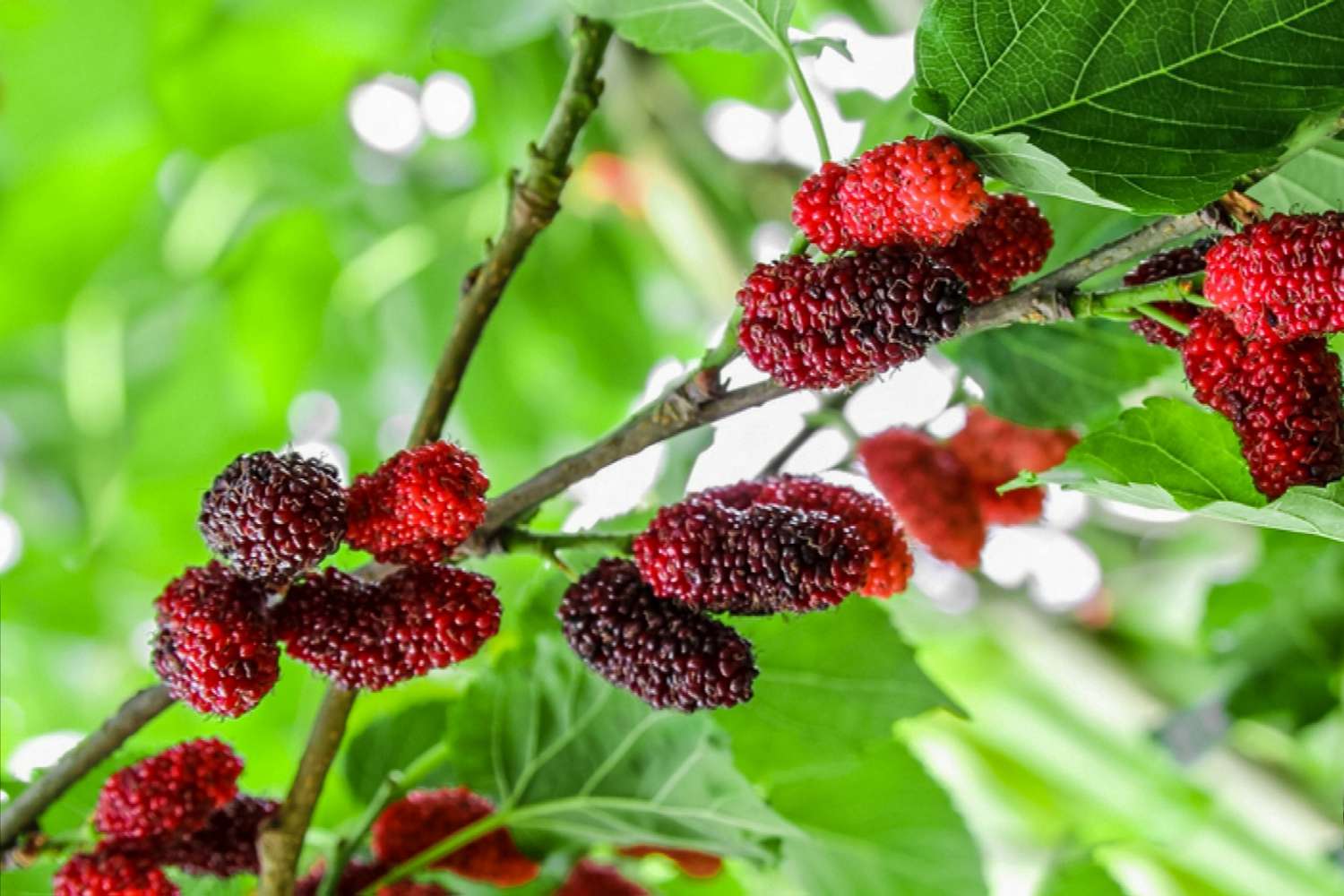
The mulberry tree, scientifically known as Morus, is a captivating plant with a rich history and a wide array of uses. From its significance in ancient cultures to its role in modern horticulture, mulberry trees have long been cherished for their fruits, leaves, and cultural symbolism. In this article, we will delve into 11 fascinating facts about the mulberry tree, shedding light on its diverse attributes and the impact it has had on various aspects of human life. Whether you're a gardening enthusiast, a history buff, or simply curious about the natural world, these insights will provide a deeper understanding of this remarkable tree and its enduring relevance. So, let's embark on a journey to uncover the intriguing and lesser-known facets of the beloved mulberry tree.
Key Takeaways:
- Mulberry trees have a rich history and cultural significance, providing tasty fruits, medicinal properties, and serving as the primary food source for silkworms. They are easy to grow, maintain, and support biodiversity.
- Mulberry trees are resilient, adaptable, and ornamental, contributing to biodiversity and providing habitat for wildlife. They are valued for their beauty, low maintenance, and diverse uses in culinary and medicinal traditions.
Mulberry trees have a rich history.
The mulberry tree, scientifically known as Morus, has a fascinating history that spans centuries and continents. Beloved for its delicious fruits and versatile uses, the mulberry tree holds a special place in various cultures and ecosystems.
Mulberry trees belong to the Moraceae family.
Belonging to the Moraceae family, the mulberry tree is closely related to figs and breadfruit. This diverse family of flowering plants encompasses a wide range of species, including deciduous trees, shrubs, and vines.
Mulberry trees are known for their tasty fruits.
The mulberry tree produces an abundance of sweet, flavorful fruits that are enjoyed by humans and wildlife alike. These juicy berries come in varying colors, including black, red, and white, and are used in an array of culinary delights, from jams and pies to wines and teas.
Mulberry leaves are the primary food source for silkworms.
The leaves of the mulberry tree serve as the primary food source for silkworms, playing a crucial role in the production of silk. This unique relationship has shaped the history of silk production and trade, highlighting the significance of the mulberry tree in the textile industry.
Mulberry trees have symbolic meanings in different cultures.
Throughout history, mulberry trees have held symbolic significance in various cultures. In some traditions, they are associated with wisdom, patience, and the cycle of life, while in others, they symbolize abundance, protection, and resilience.
Mulberry trees have medicinal properties.
The mulberry tree has been valued for its medicinal properties for centuries. Its leaves, bark, and fruits are used in traditional medicine to treat a range of ailments, including diabetes, inflammation, and cardiovascular conditions.
Mulberry trees are resilient and adaptable.
Mulberry trees are known for their resilience and adaptability to diverse climates and soil conditions. They thrive in both urban and rural settings, making them a popular choice for landscaping and reforestation efforts.
Mulberry trees have historical and cultural significance.
With a history dating back thousands of years, mulberry trees have left an indelible mark on human civilization. From their role in silk production to their symbolic importance in art and literature, these trees have been revered and celebrated across different eras and regions.
Mulberry trees are easy to grow and maintain.
Gardeners and horticulturists appreciate mulberry trees for their low maintenance and relatively easy cultivation. Their rapid growth, minimal pest susceptibility, and tolerance to various soil types make them a favored choice for home gardens and agricultural purposes.
Mulberry trees support biodiversity.
The presence of mulberry trees contributes to biodiversity by providing food and habitat for a wide range of wildlife, including birds, insects, and small mammals. Their ecological importance underscores the need for conservation and sustainable management of these valuable trees.
Mulberry trees have ornamental value.
In addition to their practical uses, mulberry trees are valued for their ornamental beauty. Their lush foliage, elegant form, and seasonal fruits make them a charming addition to landscapes, parks, and urban green spaces.
The mulberry tree's enduring appeal lies in its multifaceted contributions to culture, ecology, and human well-being, making it a cherished and integral part of the natural world.
Conclusion
In conclusion, the mulberry tree is a fascinating and versatile plant that has been cherished for centuries. Its rich history, diverse uses, and remarkable health benefits make it a valuable addition to any garden or landscape. Whether you're drawn to its delicious fruits, its significance in silk production, or its traditional medicinal properties, the mulberry tree stands as a testament to the enduring relationship between humans and plants. By understanding and appreciating the many facets of the mulberry tree, we can continue to celebrate and harness its incredible contributions to our lives and the natural world.
FAQs
What are the different species of mulberry trees?
Mulberry trees belong to the Morus genus and encompass various species, including Morus alba (white mulberry), Morus nigra (black mulberry), and Morus rubra (red mulberry). Each species offers unique characteristics and benefits, ranging from fruit variations to distinct growth habits.
How can mulberry trees be propagated?
Mulberry trees can be propagated through seeds, cuttings, or grafting. While seeds are a natural method of propagation, cuttings and grafting allow for the replication of specific desirable traits and are commonly used in commercial cultivation.
Was this page helpful?
Our commitment to delivering trustworthy and engaging content is at the heart of what we do. Each fact on our site is contributed by real users like you, bringing a wealth of diverse insights and information. To ensure the highest standards of accuracy and reliability, our dedicated editors meticulously review each submission. This process guarantees that the facts we share are not only fascinating but also credible. Trust in our commitment to quality and authenticity as you explore and learn with us.
